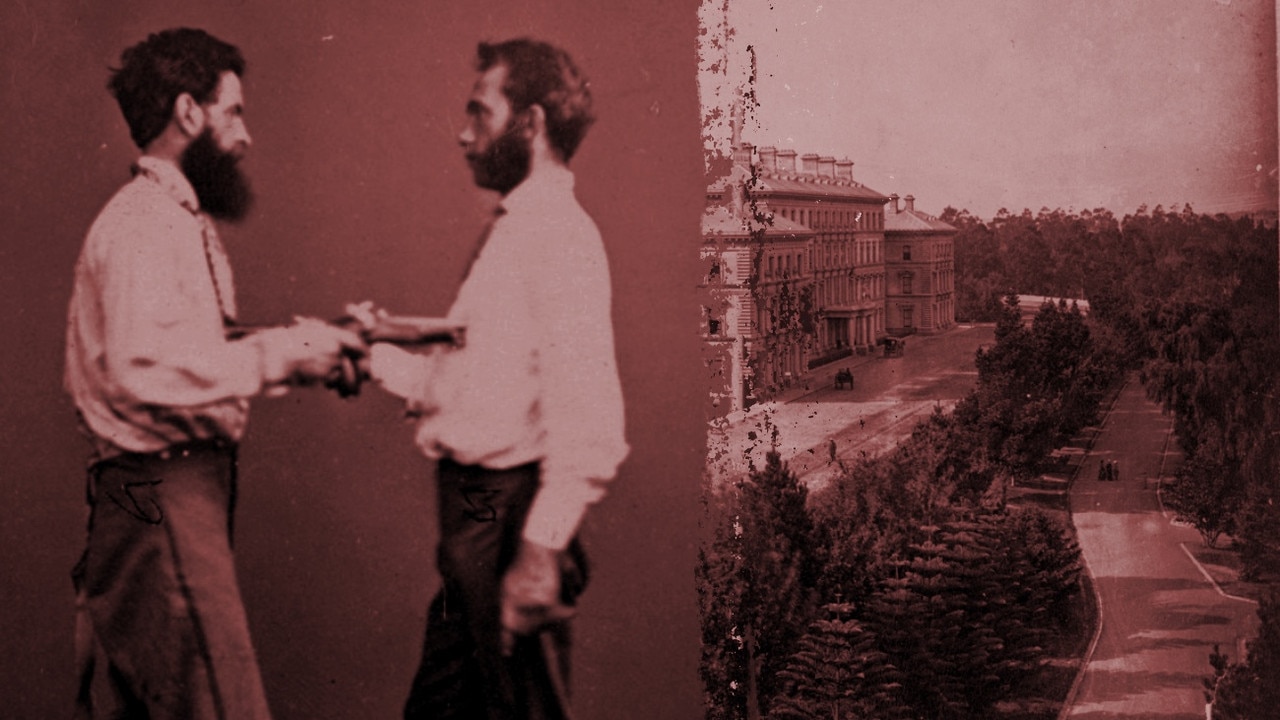When heavy rain turned Melbourne’s streets into rivers
FLOATING cars, streets turned into rivers and rain so heavy it smashed holes in windows. Melbourne’s famous for its four-seasons-in one day, but these were the times the wild weather turned dangerous.

Melbourne
Don't miss out on the headlines from Melbourne . Followed categories will be added to My News.
IT’S often joked that Melbourne experiences four seasons in one day.
But there have been times in the city’s history where its temperamental weather has been hard to laugh off.
From reports of people being trapped neck deep in water, to rain so heavy that it smashed holes in windows, Melbourne’s had its fair share of devastating floods over the years.
THE DIRTY SECRETS OF EARLY MELBOURNE
THE DARK PAST OF MELBOURNE’S LANEWAYS
In July 1891, an estimated 132mm of rain fell over Melbourne within four days, resulting in the worst flood the colony had seen in its short history.
With parts of the Yarra River rising to 11 metres, the aptly-named ‘Great Flood’ left around 3000 people homeless.
Richmond, Collingwood and Prahran were the most severely affected suburbs, with 200 homes submerged in South Yarra alone.

The violent weather brought out the best and worst in the city’s residents.
The Mount Alexander Mail reported that a woman in South Yarra “insisted on saving her best bonnet in a bandbox before even her own life or that of her relatives”.
On the other side of the river, neighbours in Richmond risked their lives to save a mother and her newborn baby.
While no death toll was released, The Horsham Times reported that the first fatality was a silt barge worker called John Dean who drowned after his boat capsized.
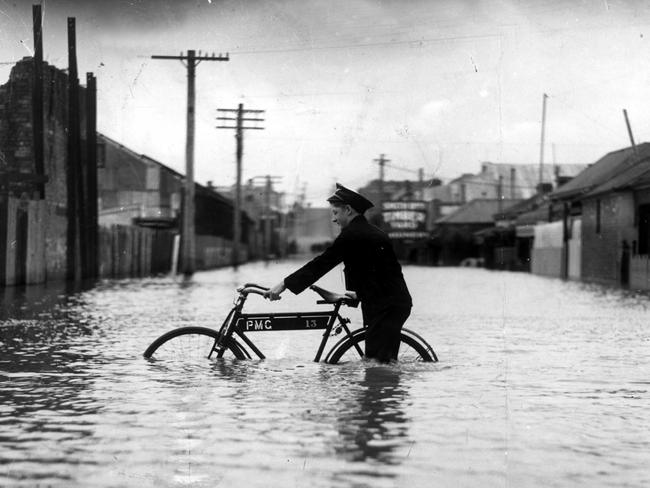
Humans were not the only victims with reports of cats, dogs, and horses drowning in the flood waters.
Factories along the Yarra were ground to a halt and several train and tram services were suspended as rising water levels threatened to compromise the city’s infrastructure.
Even the morgue was in danger of flooding.
The Argus reported that far more damage could have been done to the city had the Harbour Trust not begun making improvements to the Yarra in 1887.
1934
Melbourne’s residents were still recovering from the effects of the Great Depression when 48 hours of rain hit the city in late November 1934.
More than 140mm of rain fell, with the resulting flood causing the death of 36 people and rendering a further 6,000 homeless.
A report in The Argus described the Yarra as becoming “a series of vast lakes connected by swirling rapids” as it reached 12 metres above its normal level.
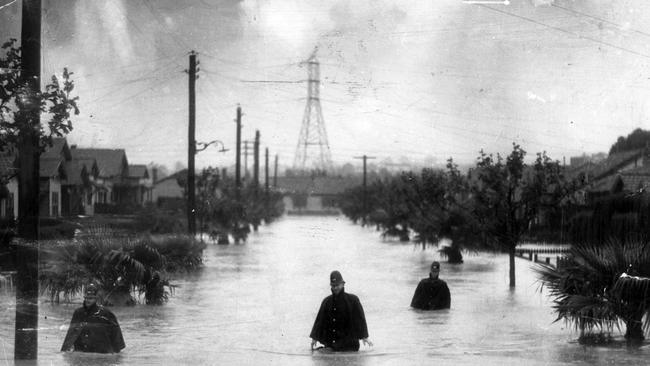

More than 400 buildings were damaged and countless boats, bridges and piers were destroyed.
A family in Chelsea made a lucky escape after they were found in a loft in their house.
They were thought to have escaped the previous day and when they were rescued, the water was over three metres high, almost touching the roof.
When the tennis courts at Kooyong became inundated with water, the Victorian tennis championships had to be transferred to Albert Park.
The flooding extended across the state with Premier Sir Stanley Argyle calling it “the worst disaster Victoria has experienced.”
The damage was estimated at £500,000 in the metropolitan area, with the rest of Victoria accounting for another £1 million.
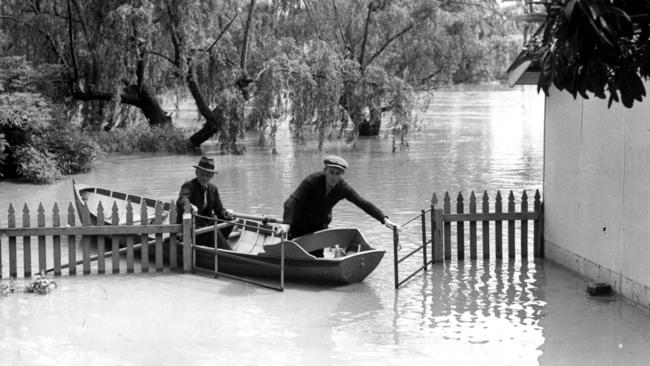
1972
The image of cars being swept through the city by a flash flood may seem like a scene from a post-apocalyptic film, but for Melburnians who were alive in 1972, it’s a vivid memory.
On 17 February that year, 75mm of rain fell between 4.05pm and 5.05pm, setting a record for Melbourne’s heaviest hour’s rainfall since records began in 1855.
Waves of flood water cascaded down Elizabeth St as 100,000 tonnes of water was dumped over one square kilometre.
The Degraves St subway became submerged and stores in the city were faced with losses estimated at $1 million due to stock damage and loss of trade.
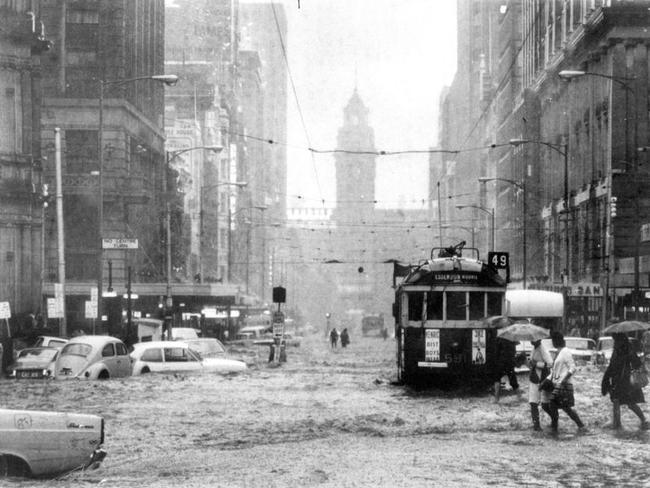
Damage to stock at the Myer Emporium alone ran into the hundreds of thousands, according to its managing director P. H. Schattner.
Former engineer Robert Padula OAM recounted his experiences of the day in his autobiography.
Because trains going through Flinders St had stopped, he and many other commuters walked along Alexandra Ave to Richmond station before jumping on the train tracks to get to Hawthorn.
“My shoes were ruined, my leather briefcase had become a sodden mess, and my suit looked like it had been washed up from the sea,” he said.
With over 238mm of rain recorded, the month of February 1972 was deemed the wettest in Melbourne’s history, a record it holds to this day.
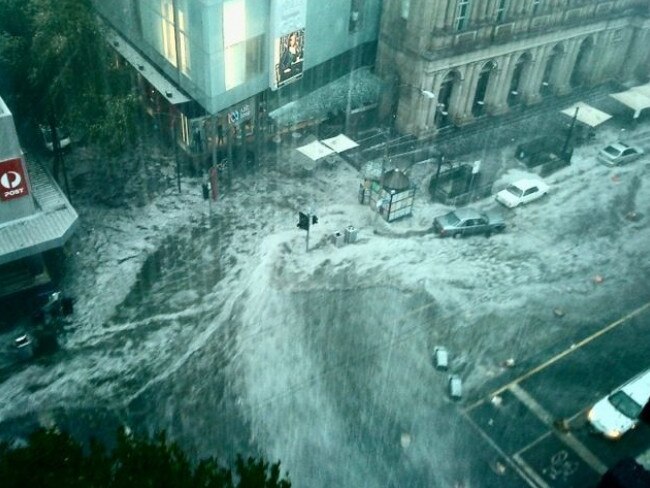
2010
On the weekend of 6 and 7 March 2010 torrential rain, hailstones and lightning hit Victoria.
Around 61mm of rain fell in Melbourne, leaving racegoers at Flemington and families at Moomba Festival scrambling to find shelter from the wet.
While no deaths were recorded, many Melburnians were injured dodging hailstones and wading knee-deep through flood waters.
Some locals even resorted to swimming down streets in an attempt to get around.
A hole in Southern Cross station’s roof led to its evacuation and Flinders Street station’s subways flooded.

Even Melbourne’s cultural landmarks weren’t saved from a battering as parts of Etihad Stadium and the National Gallery of Victoria flooded.
While none of the artworks at NGV were affected, Etihad’s damage bill was estimated to be in the millions after parts of its roof collapsed.
Across Victoria, the State Emergency Service received more than 7000 calls for help and insurance claims were expected to exceed $200 million.
The weather was so bad that a state of emergency was called and crews from Tasmania, South Australia and Queensland had to be shipped in to help clean up the damage.
MORE:
THE BIG AUSTRALIAN BRAND IDEAS THAT BOMBED

